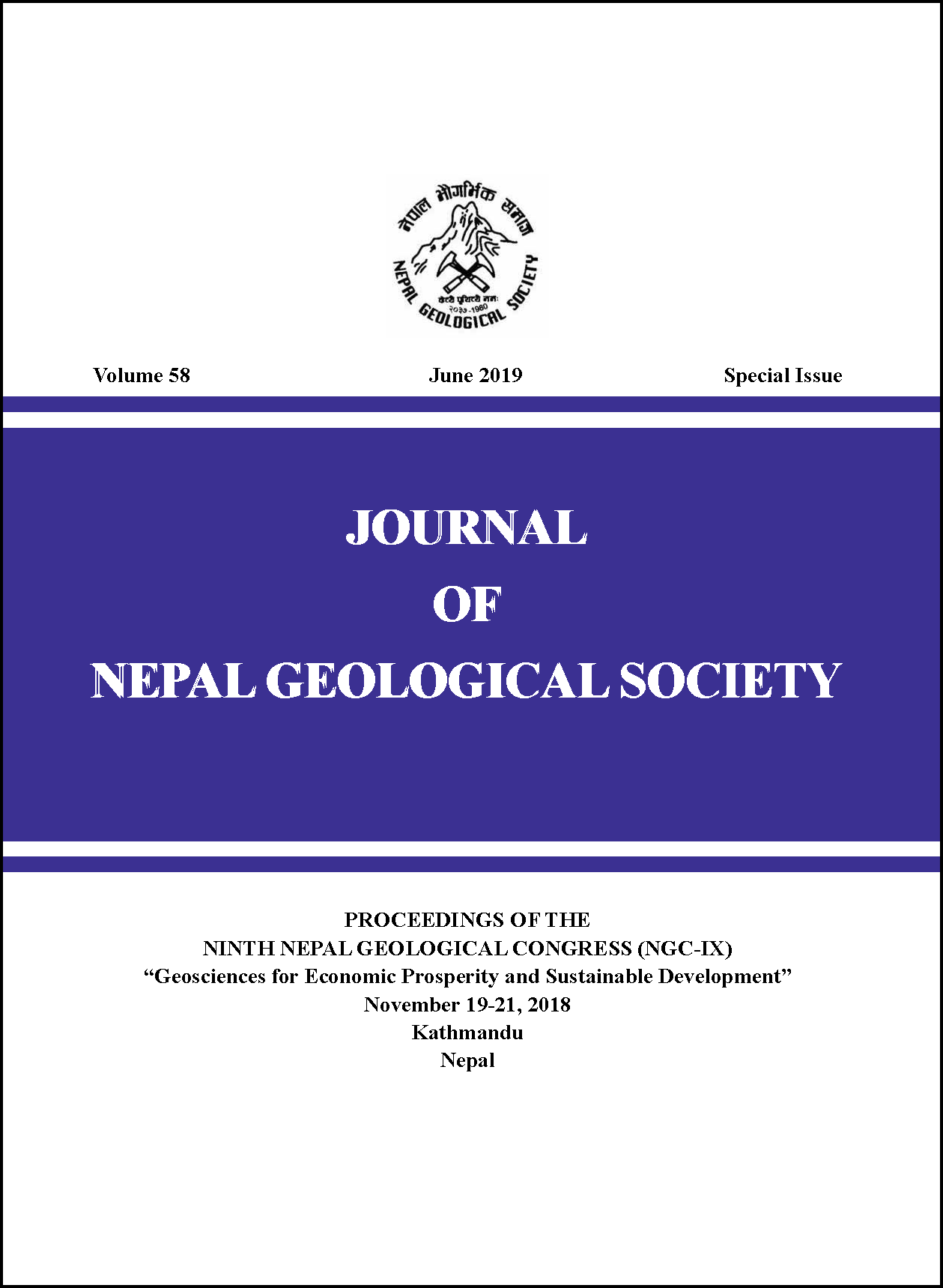Nepal, a multi-hazard risk country: Spatio-temporal analysis
DOI:
https://doi.org/10.3126/jngs.v58i0.24599Keywords:
Disaster, Multi-hazard risk,, DesInventar, Spatio-temporal analysisAbstract
Nepal, though covers small area of the earth, exposes complex geology with active tectonic processes, high peaks, sloppy terrain and climatic variation. Combination of such geo-physical and climatic conditions with existing poor socio-economic conditions, unplanned settlements, rapidly increasing population and low level of awareness has put the country in highest risk to multi-hazard events. Fires, floods, landslides and epidemics are the most frequent hazard events, which have cumulatively caused a significant loss of lives and property every year. However, due to diversity in physiographic, climatic and socio-economic conditions within the country, the type, frequency and degree of the impact of such events differs in different places. During the period of 46 years (1971-2016), an average of 2 events have been occurred causing 3 deaths/missing every day. Disaster events occurred most frequently during the months of April, July and August, while relatively lesser number of events have been reported during January, November and December. However, earthquakes have been reported in different months, regardless with the season.
This paper is an effort to analyse the spatial distribution and temporal variation of disaster events in Nepal. Further it has drawn a trend of disasters occurrence in Nepal, which will help the decision makers and other stakeholders for formulating Disaster Risk Management (DRM) plan and policies on one hand and heighten citizens’ awareness of against disasters on the other.
Downloads
Downloads
Published
How to Cite
Issue
Section
License
© Nepal Geological Society




